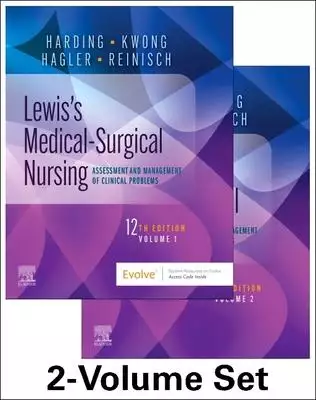Social gerontology的問題,透過圖書和論文來找解法和答案更準確安心。 我們查出實價登入價格、格局平面圖和買賣資訊
Social gerontology的問題,我們搜遍了碩博士論文和台灣出版的書籍,推薦寫的 The Routledge International Handbook of Autoethnography in Educational Research 和Harding, Mariann M.,Kwong, Jeffrey,Roberts, Dottie的 Lewis’s Medical-Surgical Nursing - 2-Volume Set: Assessment and Management of Clinical Problems都 可以從中找到所需的評價。
這兩本書分別來自 和所出版 。
輔仁大學 社會工作學系碩士班 王潔媛所指導 林資靜的 失能老人家庭照顧者僱傭外籍家庭看護工之決策歷程 (2021),提出Social gerontology關鍵因素是什麼,來自於失能老人、家庭照顧者、外籍家庭看護工、決策歷程。
而第二篇論文國立中正大學 勞工關係研究所 周玟琪所指導 李翎華的 企業運用中高齡及高齡者職務再設計之導入過程分析 (2021),提出因為有 中高齡及高齡者、職務再設計、適性工作安排、高齡社會的重點而找出了 Social gerontology的解答。
The Routledge International Handbook of Autoethnography in Educational Research

為了解決Social gerontology 的問題,作者 這樣論述:
Emilio A. Anteliz is a hydrometeorological engineer, with extensive experience at the Central University of Venezuela in managing projects, and in designing and delivering professional development and extension learning courses for practising engineers and professionals in related fields. He is also
interested in lifelong and informal learning and environmental consciousness.Deborah L. Mulligan is an Honorary Postdoctoral Researcher at the University of Southern Queensland, Australia. Her research interests include gerontology, where she has published and presented widely on older men and suic
ide ideation. Deborah has a strong interest in community capacity building through examining psychosocial groups targeted at marginalised cohorts.Patrick Alan Danaher is Professor (Educational Research) at the University of Southern Queensland, Australia. He is also an Adjunct Professor at Central Q
ueensland University, and at James Cook University, both in Australia, and he is also Docent in Social Justice and Education at the University of Helsinki, Finland.
失能老人家庭照顧者僱傭外籍家庭看護工之決策歷程
為了解決Social gerontology 的問題,作者林資靜 這樣論述:
臺灣邁入高齡社會,老年人口比率上升,在疾病與老化的雙重影響下,日常生活仰賴他人提供照顧,然家庭照顧者無法長期回應此密集性需求,選擇聘僱外籍家庭看護工協助分擔家內照顧成為首要選擇。本研究即探討失能長者之家庭照顧者聘僱外籍家庭看護工之決策過程與動機,採取質化研究,以半結構問卷進行訪談,訪談宜蘭地區曾考慮僱傭及已僱傭外籍家庭看護工的失能老人家庭,共有17位失能老人之家庭成員,探討影響失能老人家庭決策與僱傭外籍家庭看護工歷程,及僱傭後對家庭互動關係之變化。 本研究發現,失能老人欲聘僱外籍家庭看護工為回應家中長者因疾病導致失能後需要密集性照顧,加上居住型態改變,多數長者與成年
子女並未同住,家庭照顧分工不易,面臨工作、家庭與子女分工等諸多限制。另有高齡配偶擔任家庭主要照顧者,皆為家庭向外尋求照顧服務資源之肇因。其次,失能老人家庭聘僱的決策過程中,遵循著「長幼有序」、「男性決策為主」之文化規範,以及「主要照顧者具有經濟決策權」的模式進行照顧資源的選擇。在現有各項長照服務資源中,家屬選擇外籍家庭看護工之考量分別為「照顧安全性」、「照顧連續性」、「照顧可負擔性」、「申請服務的可近性」,其中又以「照顧安全性」、「連續性照顧」為關鍵之因素,認為外籍家庭看護工的特質最貼近照顧需求。 外籍家庭看護工在進入失能老人家庭後,即與失能老人及家庭照顧者形成三角的互動關係,與老
人逐漸發展類家人的信任與家屬的僱傭關係,隨不同角色與關係,發展出三角制衡關係。失能老人與家屬皆認為在僱傭外籍家庭看護工後,在照顧品質及家人間的生活品質皆有改善,然仍需回應外籍家庭看護工「多元化飲食習慣」、「語言溝通障礙」、「執行照顧工作的異質性」等現況,指出雇主端需有意識的融合外籍家庭看護工文化差異。另外,首次聘用外籍家庭看護工與已聘用外籍家庭看護工多年兩者相較,對於「外籍家庭看護工品質的穩定性」與「長期支出照顧費用的經濟壓力」之感受差異性最大。 為穩定外籍家庭看護工之品質,與外籍家庭看護工的溝通與培訓之質與量最為關鍵。同時,在媒合外籍家庭看護工與失能老人過程中,雇主須敏感家庭看護
工文化差異與需求,能有助於外籍看護工執行照顧工作的穩定性。研究建議家屬可結合社區端現有的資源網絡,由外籍家庭看護工陪同失能老人參與社區活動,有助於雙方的社會參與及對文化差異的了解,重視外籍看護工在家庭與社區的融合。政府在積極發展長照政策之際,回應失能家庭照顧者主觀性需求,增加服務資源的連續性與可及性,回應失能老人與家庭長期面臨之多元負荷,維持家庭的穩定性。
Lewis’s Medical-Surgical Nursing - 2-Volume Set: Assessment and Management of Clinical Problems

為了解決Social gerontology 的問題,作者Harding, Mariann M.,Kwong, Jeffrey,Roberts, Dottie 這樣論述:
Gain the knowledge and skills you need to succeed in medical-surgical nursing with this leading textbook! Lewis’s Medical-Surgical Nursing, 12th Edition uses a conversational writing style, a focus on nursing concepts and clinical trends, evidence-based content, and basic pathophysiology review t
o provide the solid foundation needed in a rapidly changing healthcare environment. Comprehensive chapters cover topics including nursing management and collaboration, health promotion, acute interventions, and ambulatory care. Summary tables and boxes make it easy to find essential information, and
a building-block approach makes even the most complex concepts simple to grasp. In addition to three new chapters, this edition includes a stronger focus on the nursing process, clinical judgment, and preparation for the Next-Generation NCLEX(R) Examination.Content written and reviewed by leading e
xperts in the field ensures that information is comprehensive, current, and clinically accurate.Interprofessional care is addressed in special Interprofessional Care sections and Interprofessional Care tables.Bridge to the NCLEX(R) Examination review questions reinforce key content and include both
standard and alternate item format questions to help you prepare for the NCLEX exam.Coverage of cultural and ethnic health disparities highlights important issues such as risk factors, economic aspects, and access to health care.Coverage of gerontology and chronic illness is addressed in a separate
chapter and highlighted in special gerontologic tables.Pathophysiology maps use flowcharts tooutline complex concepts related to diseases, making them easier to understand.Focused Assessment boxes provide brief checklists for a practical assessment on the run or bedside approach to assessment, and c
an be used to evaluate the status of previously identified health problems and monitor for signs of new problems.Safety Alert boxes highlight patient safety issues and focus on the National Patient Safety Goals.Nutritional Therapy tables summarize nutritional interventions and strategies for promoti
ng healthy lifestyles.Promoting Population Health boxes summarize health care goals as they relate to specific disorders such as cancer and diabetes, and identify strategies for health promotion.Drug Therapy tablesandDrug Alerts highlight important safety considerations for key drugs.Check Your Prac
tice boxes challenge you to think critically, analyze patient assessment data, and implement appropriate interventions.Coverage of genetics includes a separate chapter on genetics, Genetics in Clinical Practice boxes covering disorders and genetic testing, risk alerts, and links to disorders.Focus o
n patient and caregiver teaching shows how you can help patients and caregivers learn to manage chronic illnesses and conditions.Ethical / Legal Dilemmas boxes introduce key topics such as informed consent, advance directives, and confidentiality.Enhanced focus on clinical judgment and preparation f
or the Next-Generation NCLEX(R) Exam (NGN) features Applying Clinical Judgment With Multiple Patients boxes with traditional and NGN-style questions.Revised table of contents reflects critical care content throughout the book and adds new chapters including Supporting Ventilation and Caring for Lesb
ian, Gay, Bisexual, Transgender, Queer or Questioning, and Gender Diverse Patients.Social Determinants of Health chapter focuses on nursing awareness of how patient circumstances affect health outcomes.Clinical problems language replaces NANDA-I / ICNP diagnoses and better aligns with Harding &
Hagler’s Conceptual Nursing Care Planning.Case studies - now labeled with Cognitive Skills from the NCSBN’s Clinical Judgment Measurement Model - bring patient care to life, helping you develop skills in clinical judgment, prioritization, delegation, and evidence-based practice.Conceptual focus for
the patient experiencing infection or inflammation is included in the Infection chapter and the Inflammation and Healing chapter.Updated content throughout reflects the latest evidence-based guidelines for patient care.Streamlined features and content provide an optimized learning experience.
企業運用中高齡及高齡者職務再設計之導入過程分析
為了解決Social gerontology 的問題,作者李翎華 這樣論述:
自2012年起,勞動部開始制度化地推動中高齡及高齡者職務再設計,以協助中高齡及高齡勞工排除工作障礙,提升工作效能,進而能夠適性、穩定就業。然中高齡及高齡者職務再設計相關獎助計畫已實施近十年,計畫參與人數及認知度依然偏低,尚需提升企業之參與意願。本文彙整過去中高齡及高齡者職務再設計政策及研究發現,過去研究在政策面及硬體層面的安全職場、工作環境改善著墨較多,較少由企業角度探討其為何及如何導入中高齡及高齡者職務再設計。本文透過文獻蒐集瞭解日、韓、美、英各國制度及臺灣目前的發展,並藉由深入訪談法與個案研究法,訪談13位相關人員,包括5位人力資源人員,3位參與導入職務再設計的企業主管,以及5位接受職務
再設計改善之中高齡及高齡勞工,蒐集其經驗與建議,以探究企業運用中高齡及高齡者職務再設計措施之導入歷程,包括導入背景與動機、決策因素、具體做法與執行障礙、執行效益與未來展望。研究發現企業的導入動機以彌補內部人力及技術斷層、因應員工需求、受政策激勵為主;其執行方式多元,硬體層面著重於提升職場安全衛生、降低勞動強度及職災風險;軟體層面的重點則偏向透過管理制度與工作方法之改變,令勞工更易於工作。執行障礙則主要為企業管理制度與中高齡及高齡勞工心理因素交互導致,包括:中高齡及高齡勞工害怕被取代、較難接受改變、較少主動反應需求等;執行效益在企業內部主要為協助內部知識、技術傳承,活化中高齡及高齡勞動力,以及提
高勞工的生產力與工作滿意,而在外部則能塑造雇主品牌,有助於提升企業形象。本文建議應積極建立勞雇雙方對於中高齡及高齡者職務再設計的正確認知、促進勞雇間的溝通及建立協商機制;在政策推廣上應結合不同的計畫資源、加強資訊普及化來提升政策能見度、認知度與參與之誘因,提升勞、雇之參與意願並落實職務再設計,以達成滿足企業營運需求、勞工心理與經濟需求且有益於社會安全的三贏形勢。